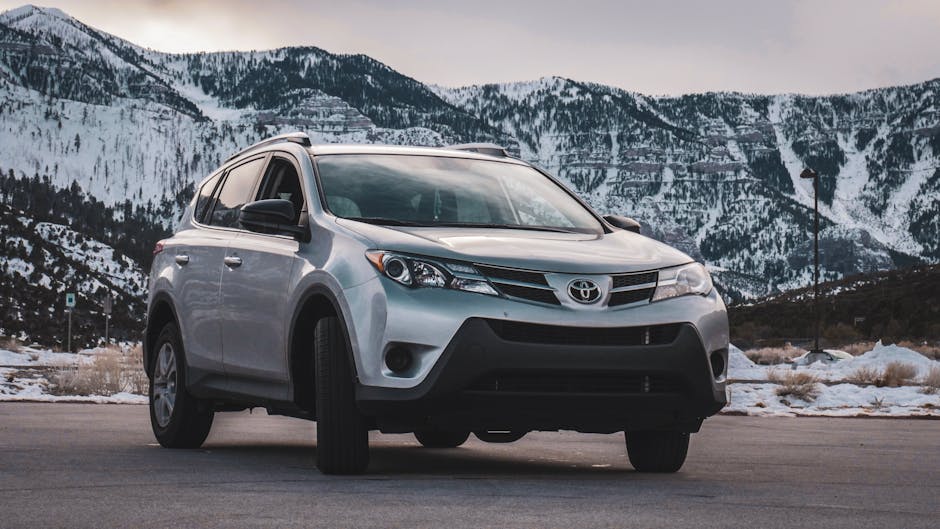How to Choose Rental Cars for Winter Travel
As the winter season approaches, many travelers start planning their snowy getaways. Whether you’re heading to a ski resort, visiting family for the holidays, or simply exploring a winter wonderland, one crucial aspect to consider is your mode of transportation. Renting a car for winter travel can be a smart choice, offering flexibility and convenience to navigate through icy roads and snowy landscapes. However, choosing the right rental car for winter conditions is essential to ensure a safe and comfortable journey.
In this comprehensive guide, we will delve into the important factors to consider when selecting a rental car for winter travel. From understanding the different types of vehicles to choosing the appropriate features for snowy roads, we will provide you with the knowledge and tips to make an informed decision. So, before you hit the road this winter, let’s explore how to choose the best rental car for your winter adventures.
The Importance of Choosing the Right Rental Car

When it comes to winter travel, the type of vehicle you choose can significantly impact your safety and overall experience. Winter conditions such as snow, ice, and freezing temperatures can pose challenges for drivers, especially those who are not accustomed to driving in such environments. A rental car that is equipped to handle these conditions can make a huge difference in your journey.
Choosing the right rental car for winter travel can provide the following benefits:
- Improved traction and stability on icy roads
- Enhanced safety features to prevent accidents
- Comfort and convenience during long drives in cold weather
- Peace of mind knowing that your vehicle can handle winter conditions
Now that we understand the importance of selecting the right rental car for winter travel, let’s explore the key factors to consider when making this decision.
Subheading 1: Vehicle Type

When it comes to renting a car for winter travel, the type of vehicle plays a crucial role in determining how well it will perform in snowy conditions. Generally, all-wheel drive (AWD) and four-wheel drive (4WD) vehicles are preferred for winter travel due to their improved traction and stability on slippery roads. These types of vehicles distribute power to all four wheels, providing better control and handling in snow and ice.
Some popular options for winter rental cars include SUVs, crossovers, and trucks with AWD or 4WD capabilities. These vehicles offer a higher ground clearance and better maneuverability in snowy terrain. However, it’s important to note that not all AWD or 4WD vehicles are created equal. Some may have more advanced traction control systems or winter-specific features that enhance their performance in cold weather.
Before selecting a rental car for winter travel, consider the following factors related to vehicle type:
- Size and seating capacity for your travel needs
- Ground clearance to navigate through snow and ice
- AWD or 4WD capabilities for better traction
- Winter-specific features such as heated seats, defrosters, and snow tires
By choosing the right type of vehicle for winter travel, you can ensure a safer and more comfortable journey through snowy landscapes.
Subheading 2: Winter-Specific Features

When selecting a rental car for winter travel, it’s essential to look for specific features that can enhance your driving experience in cold weather. Winter-specific features are designed to improve traction, visibility, and overall performance in snowy conditions. These features can make a significant difference in how well your rental car handles icy roads and extreme temperatures.
Some key winter-specific features to consider when choosing a rental car include:
- Snow tires: Tires with deeper treads and a special rubber compound that provide better grip on snow and ice.
- Heated seats and steering wheel: Features that keep you warm and comfortable during cold winter drives.
- Defrosters and heated mirrors: Systems that prevent frost and ice buildup on windows and mirrors for improved visibility.
- Electronic stability control (ESC): A safety feature that helps maintain control of the vehicle on slippery roads.
- Anti-lock braking system (ABS): A system that prevents the wheels from locking up during sudden braking, improving control and stability.
By choosing a rental car with these winter-specific features, you can ensure a safer and more enjoyable driving experience in winter conditions.
Subheading 3: Safety Ratings

When renting a car for winter travel, safety should be a top priority. Ensuring that your rental car has high safety ratings can give you peace of mind knowing that you are in a secure vehicle. Safety ratings are based on crash tests and evaluations conducted by organizations such as the National Highway Traffic Safety Administration (NHTSA) and the Insurance Institute for Highway Safety (IIHS).
Before choosing a rental car for winter travel, consider looking up the safety ratings of the vehicle you are interested in. Pay attention to factors such as crashworthiness, crash avoidance, and overall safety features. Vehicles with high safety ratings are more likely to protect you and your passengers in the event of an accident, making them a wise choice for winter travel.
Additionally, consider renting a car with advanced safety features such as:
- Forward collision warning
- Lane departure warning
- Blind-spot monitoring
- Rearview cameras
- Automatic emergency braking
These features can help prevent accidents and improve your safety on the road, especially in challenging winter conditions.
Subheading 4: Rental Car Insurance
When renting a car for winter travel, it’s crucial to consider insurance coverage to protect yourself and the vehicle in case of an accident. Most rental car companies offer insurance options that can provide coverage for damage, theft, liability, and medical expenses. It’s essential to understand the different types of rental car insurance and choose the coverage that best suits your needs.
Some common types of rental car insurance include:
- Collision Damage Waiver (CDW): Covers damage to the rental car in case of a collision.
- Loss Damage Waiver (LDW): Covers the cost of repairing or replacing the rental car if it is damaged or stolen.
- Liability Insurance: Provides coverage for injuries or property damage to others in case of an accident.
- Personal Accident Insurance: Covers medical expenses for you and your passengers in case of an accident.
- Personal Effects Coverage: Protects your personal belongings inside the rental car in case of theft or damage.
Before renting a car for winter travel, review your existing auto insurance policy to see if it extends coverage to rental cars. If not, consider purchasing additional insurance from the rental car company to ensure proper protection during your winter journey.
Subheading 5: Preparing for Winter Conditions
Before embarking on your winter travel adventure, it’s important to prepare yourself and your rental car for the cold weather and snowy roads. Taking the following steps can help ensure a safe and enjoyable journey:
- Check the weather forecast: Stay informed about the weather conditions along your route and at your destination.
- Inspect the rental car: Before driving off, check the tires, brakes, lights, and fluid levels to ensure the vehicle is in good condition.
- Pack an emergency kit: Include essentials such as a flashlight, blankets, water, non-perishable food, a first aid kit, and a snow shovel in case of emergencies.
- Practice winter driving skills: Familiarize yourself with driving on snow and ice, and practice safe driving techniques such as braking gently and maintaining a safe distance from other vehicles.
- Plan your route: Choose well-traveled roads and highways that are likely to be plowed and treated for snow and ice.
By taking these precautions and being prepared for winter conditions, you can enjoy a smooth and stress-free winter travel experience in your rental car.
Subheading 6: Rental Car Pickup and Return
When picking up and returning your rental car for winter travel, there are a few key points to keep in mind to ensure a seamless experience:
- Inspect the rental car: Before driving off, thoroughly inspect the vehicle for any existing damage and report it to the rental car company to avoid being held responsible.
- Request winter accessories: If needed, ask the rental car company for snow chains, ice scrapers, or other winter accessories to enhance your driving experience.
- Return the car on time: Be mindful of the rental car return time to avoid additional fees or penalties.
- Refuel the car: Return the rental car with a full tank of gas to avoid refueling charges from the rental car company.
By following these guidelines, you can ensure a smooth rental car pickup and return process for your winter travel.
Subheading 7: Common Misconceptions
When it comes to choosing rental cars for winter travel, there are several common misconceptions that can lead to poor decision-making. Let’s debunk some of these myths to help you make informed choices:
Myth 1: All-wheel drive (AWD) is all you need for winter driving.
Reality: While AWD can improve traction on snowy roads, it does not guarantee better handling or braking. It’s essential to drive cautiously and equip your rental car with winter tires for optimal performance.
Myth 2: Rental car insurance is unnecessary if you have auto insurance.
Reality: Auto insurance policies may not cover rental cars or provide limited coverage. Purchasing rental car insurance can offer additional protection and peace of mind during your winter travels.
Myth 3: Compact cars are better for winter driving due to their size and weight.
Reality: Compact cars may not perform well in snowy conditions due to their lower ground clearance and lighter weight. Choosing a larger vehicle with AWD or 4WD can provide better stability and traction on icy roads.
By dispelling these misconceptions and understanding the facts, you can make informed decisions when choosing a rental car for winter travel.
Conclusion
In conclusion, selecting the right rental car for winter travel is a crucial step in ensuring a safe and enjoyable journey through snowy landscapes. By considering factors such as vehicle type, winter-specific features, safety ratings, insurance coverage, and preparedness for winter conditions, you can make an informed decision that enhances your winter travel experience.
As you plan your next winter getaway, remember to choose a rental car that is equipped to handle the challenges of winter driving. By taking the time to research and select the right vehicle for your needs, you can navigate snowy roads with confidence and peace of mind.
So, before you embark on your winter adventure, remember to choose a rental car that will keep you safe, comfortable, and prepared for whatever winter conditions may come your way. Happy travels!




